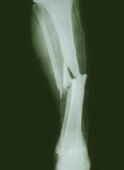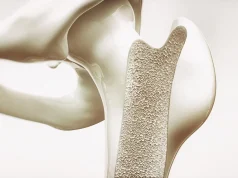Researchers find patients at highest risk for fractures often miss out on tests
TUESDAY, May 26, 2015 (HealthDay News) — Too few women at high risk for osteoporosis are being tested for the condition, while too many women at low risk are being screened, according to new research published online May 19 in the Journal of General Internal Medicine.
A team led by Anna Lee Amarnath, M.D., M.P.H., of the University of California, Davis, examined the medical records of 50,995 women, aged 40 to 85, living in the Sacramento area. The researchers looked at whether or not women were receiving dual-energy X-ray absorptiometry tests.
The result: Osteoporosis screening rates jumped sharply at age 50, despite guidelines suggesting that screening only begin at age 65, unless a woman has certain risk factors (body mass index <20 kg/m², glucocorticoid use, secondary osteoporosis, prior high-risk fracture, rheumatoid arthritis, alcohol abuse, and current smoking). The researchers also found that those risk factors had only a slight effect on a woman’s decision to get tested. Over seven years, more than 42 percent of eligible women aged 65 to 74 were not screened, Amarath’s team found, nor were nearly 57 percent of those older than 75. However, nearly 46 percent of low-risk women aged 50 to 59 were screened, as were 59 percent of low-risk women aged 60 to 64.
“Health systems should invest in developing electronic health records systems that prompt providers at the point-of-care when screening is needed and when it can be postponed,” study senior author Joshua Fenton, M.D., M.P.H., an associate professor of family and community medicine at UC Davis, said in a journal news release.
Full Text (subscription or payment may be required)
Copyright © 2015 HealthDay. All rights reserved.








